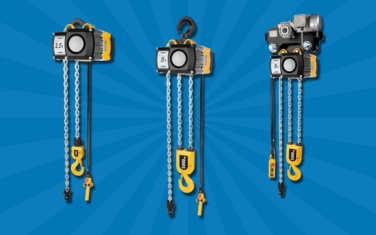Types of Electric Hoist Suspension
Types of Electric Hoist Suspension: A Simple Guide to Smarter Lifting
Ever wondered what truly elevates your lifting game? It’s not just the hoist - it’s how it hangs. From the straightforward top hook to the more advanced powered trolley, the suspension type of your electric chain hoist is the unsung hero of safety, control and efficiency. Get it wrong, and your operations could be dragging. Get it right, and you’ll lift smarter, faster, and safer. In this guide, we’ll break down the different types of electric hoist suspension and help you choose the right setup for your workflow.
In this guide, we’ll walk you through the main types of electric hoist suspension, explain when and why they’re used, and help you decide which setup is right for your workspace. Whether you're working in a warehouse, workshop, or industrial facility, this breakdown will help make sense of the options available so you can make the most informed purchase and get the most out of your electric hoist setup.
What Is Electric Hoist Suspension?
But first, what is electric hoist suspension all about?
Electric hoist suspension simply refers to how the hoist is attached to its supporting structure, whether by a beam clamp or trolley system. The right suspension type changes everything: it can improve efficiency, increase safety and extend the life of your hoist.
Depending on your setup and how much movement you need, there are several suspension options available, each with its own strengths - so which electric hoist suspension setup is best for you? Let’s explore…
Top Hook Suspension: Quick and Convenient
A top hook is one of the most flexible suspension methods for your electric hoist. It features a hook (complete with a safety catch) at the top of the hoist, allowing you to quickly attach it to a beam clamp or trolley.
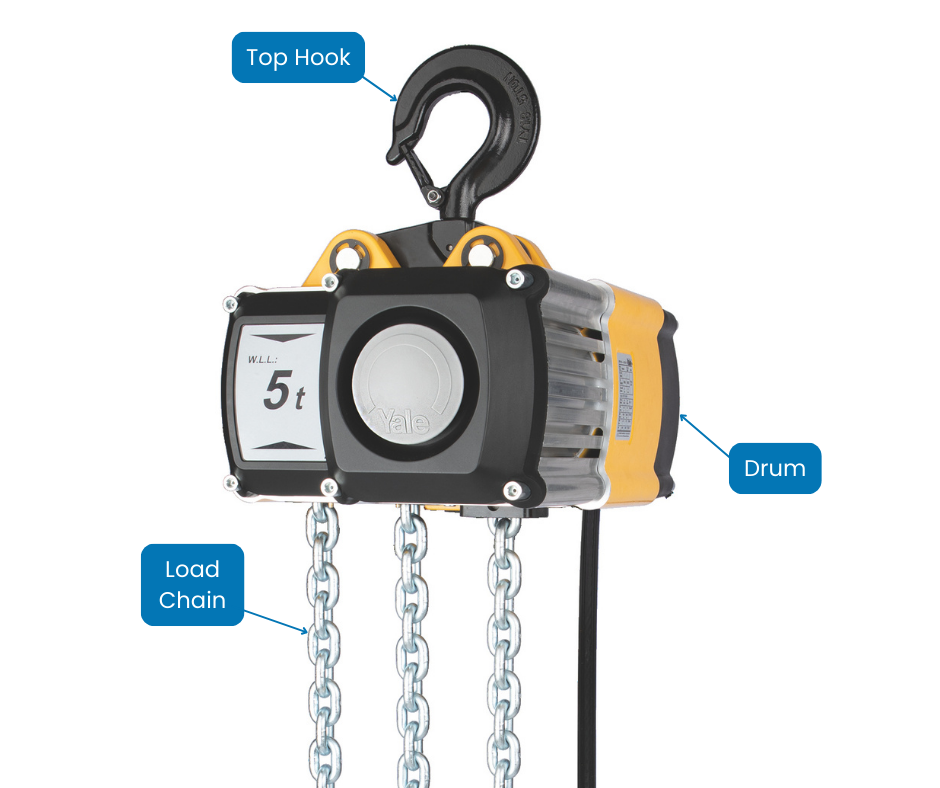
This method is especially popular for temporary installations or in the hoist rental industry, where ease of setup and removal is key. It’s a go-to solution for anyone who needs the ability to move the hoist from one location to another.
If you're looking for flexibility and fast installation, a top hook suspension option is well-worth considering. You can find top hook hoists in our electric chain hoists range.
Our Top Products
- 125Kg Yale CPS Electric Chain Hoist
- 250Kg Yale CPS Electric Chain Hoist
- Stahl ST Electric Chain Hoist - 400 volt output
- 2000Kg Yale CPV F 400v Electric Chain Hoist
- Yale CPV F Electric Chain Hoist 400V
- CM Lodestar Electric Chain Hoists (110V)
- CPV F Yale Electric Chain Hoist 400V (capacity 2500 - 5000 Kgs)
- Stahl High Speed Electric Chain Hoist
- CM Lodestar Electric Chain Hoists (400V)
- Liftket Star Electric Chain Hoist
- CM Lodestar Electric Chain Hoists (230V)
Push Travel Trolley: Manual, Simple, Effective
A push travel trolley adds horizontal movement to your hoist, allowing you to slide it along a beam manually. It’s a straightforward hoisting system that, once installed, the operator can reposition by simply pushing or pulling it across the beam.
Push trolleys are commonly used in industrial environments where moderate loads need to be moved short distances. As such, they’re a cost-effective way to add flexibility to your lifting system without adding unnecessary complexity.
Check out our full range of hoist-compatible trolleys and lifting equipment here.
Our Top Products
- Stahl ST Electric Chain Hoist - 400 volt output
- 2000Kg Yale CPV F 400v Electric Chain Hoist
- Yale CPV F Electric Chain Hoist 400V
- CM Lodestar Electric Chain Hoists (110V)
- Stahl High Speed Electric Chain Hoist
- CM Lodestar Electric Chain Hoists (400V)
- Liftket Star Electric Chain Hoist
- CM Lodestar Electric Chain Hoists (230V)
Lug Suspension: A Fixed, Secure Option
For more permanent setups, a lug suspension is a strong choice. Rather than hooking on, the hoist is fixed to the supporting structure using a solid suspension lug, acting as a closed loop that bolts directly to a trolley or beam clamp.
Because it is firmly fixed in place, lug suspension offers excellent stability and is preferred in production lines or facilities where the hoist remains in one spot for extended periods.
You’ll find lug suspensions available on high-quality hoists from brands like Yale and Liftket.
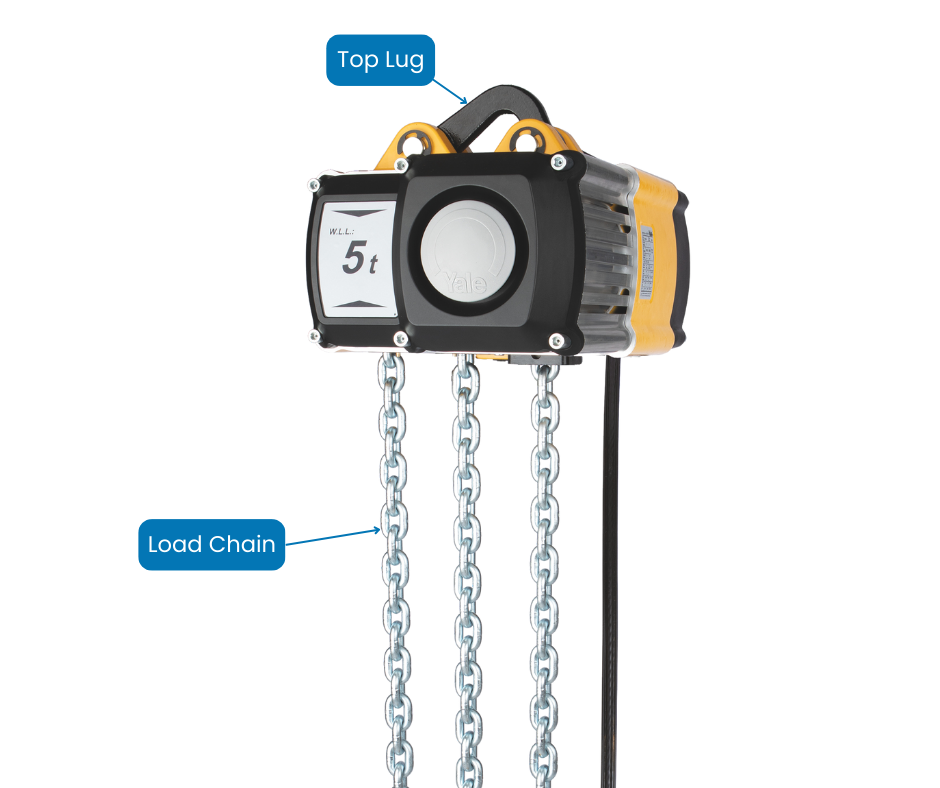
Geared Travel Trolley: Controlled Movement for Heavier Loads
For those requiring more control in their lifting operations, especially when working with heavier loads, a geared travel trolley is the ideal solution. Instead of pushing the hoist by hand, a hand chain lets you move it smoothly along the beam with minimal effort and maximum efficiency.
This is ideal for applications where precise load placement is crucial, or where the hoist cannot be manually pushed.
Geared trolleys offer a balance between manual and powered solutions, making this a great option for environments where safety and control matter just as much as simplicity.
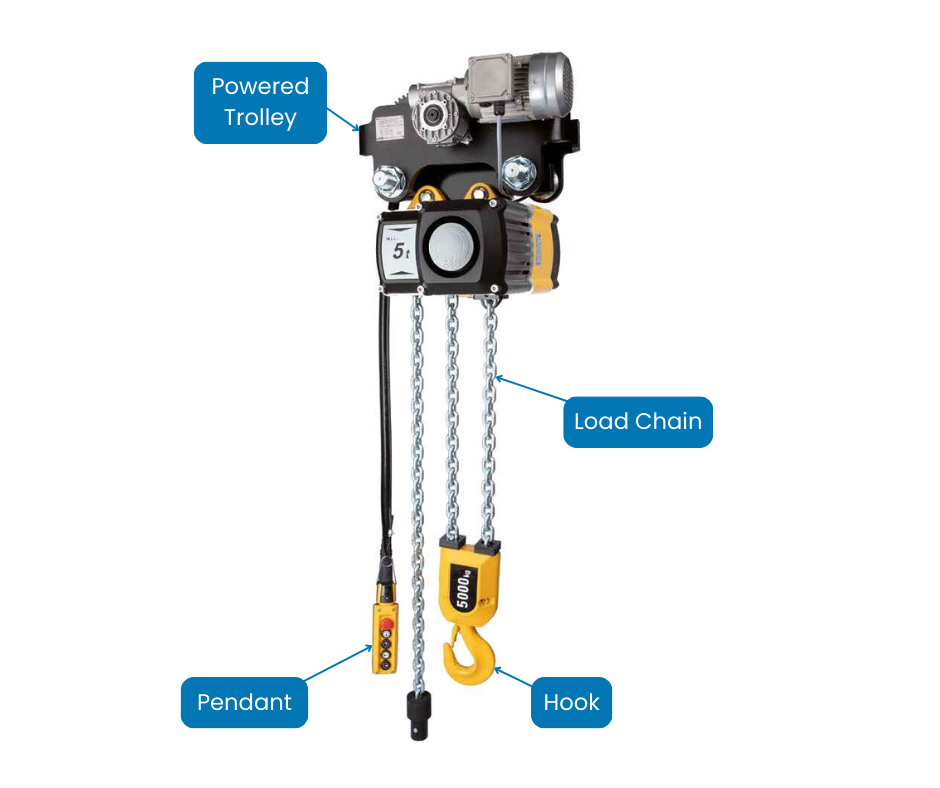
Our Top Products
- CPV F Yale Electric Chain Hoist 400V (capacity 2500 - 5000 Kgs)
- CM Lodestar Electric Chain Hoists (400V)
- Liftket Star Electric Chain Hoist
- CM Lodestar Electric Chain Hoists (230V)
Powered Trolley: For High-Demand Environments
When speed, consistency and precision are top priorities, a powered trolley, also known as an electric travel trolley, is the way to go. It moves along the beam at the push of a button and is ideal for high-frequency use.
Powered trolleys are often available with single-speed or dual-speed controls. A single-speed model moves at a consistent pace, while a dual-speed version allows the operator to choose the appropriate speed for greater control.
Powered trolleys are widely used in warehouses, factories, and large-scale installations, where efficiency and ease of use are critical. You’ll find excellent electric trolley options from GIS AG and Stahl.
Our Top Powered Trolleys
- Stahl ST Electric Chain Hoist - 400 volt output
- 2000Kg Yale CPV F 400v Electric Chain Hoist
- Yale CPV F Electric Chain Hoist 400V
- CPV F Yale Electric Chain Hoist 400V (capacity 2500 - 5000Kgs)
- CM Lodestar Electric Chain Hoists (400V)
Single Speed vs Dual Speed Hoists: What’s the Difference?
Beyond how your hoist is suspended, you’ll also want to consider your hoisting speed. The primary difference between a single-speed and dual-speed hoist is that a single-speed hoist operates at one fixed speed, whereas a dual-speed hoist provides you with the option to select your speed. As such, single-speed hoists are the simpler and cost-effective option, while dual-speed hoists give you the flexibility to lift at both a fast and a slow pace.
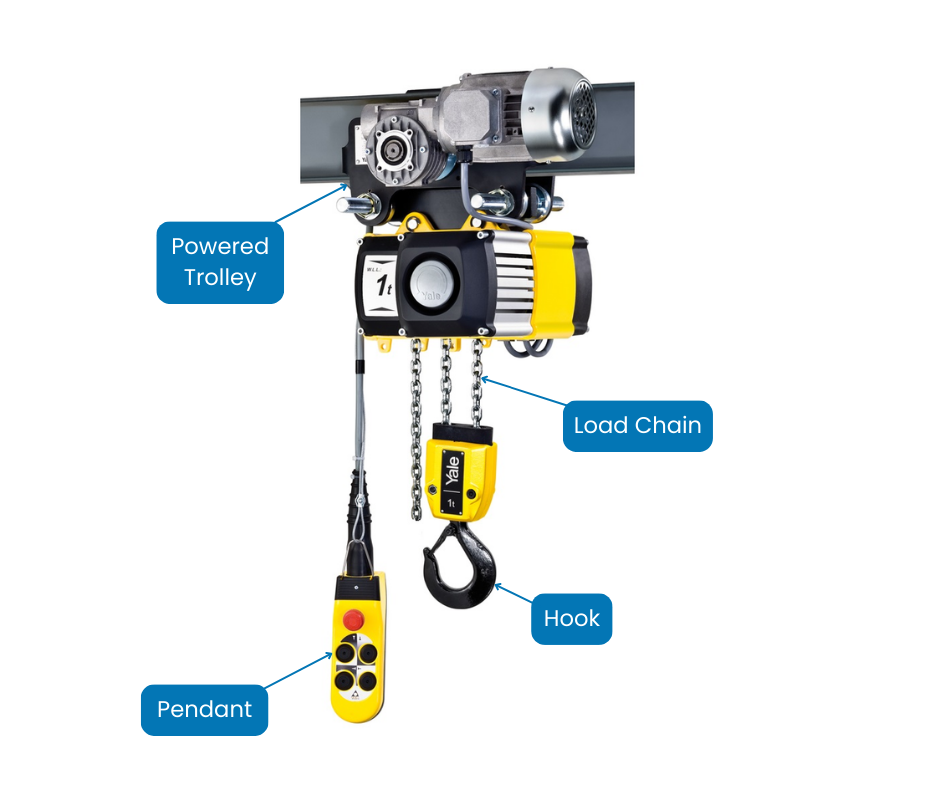
While single-phase hoists are typically single speed, three-phase hoists often support dual speed options, providing smoother and more controlled handling.
Unsure which hoist speed is best for your requirements? Our expert team can help you choose the right hoist for your setup.
Why the Right Suspension Type Matters
Choosing the right hoist suspension isn’t just about how the hoist is held; it affects everything from safety and ease of use to how long your lifting equipment will last. The key is to match your suspension type to your environment and application:
- Need mobility? Go for a top hook.
- Want stability? Lug suspension has you covered.
- Need to move the hoist along a beam? Choose a push, geared or powered trolley, depending on how much control and frequency of use you need
- Working in a demanding industrial space? Dual-speed and powered trolleys can boost both safety and efficiency.
Ready to Find the Perfect Electric Hoist Suspension Setup?
Whether you're outfitting a workshop, upgrading a warehouse, or managing industrial lifting operations, having the right suspension method makes all the difference. From flexible top hook options to precision electric trolleys, ULS Lifting offers a full range of electric chain hoists and accessories to meet every lifting need.
Browse our hoists, including top brands like, Yale, CM Lodestar, Liftket and Stahl. If you need some advice, please speak to our team for tailored guidance. Call us on 01384 986 026 or email us.

